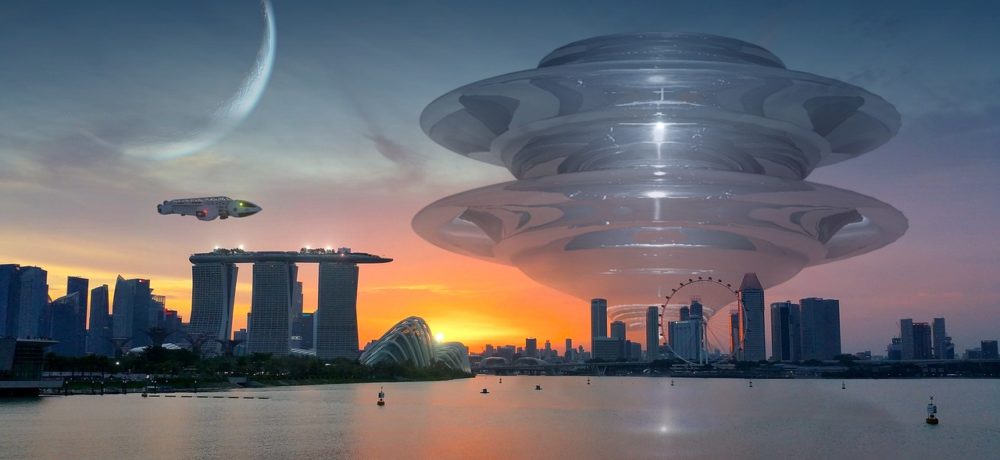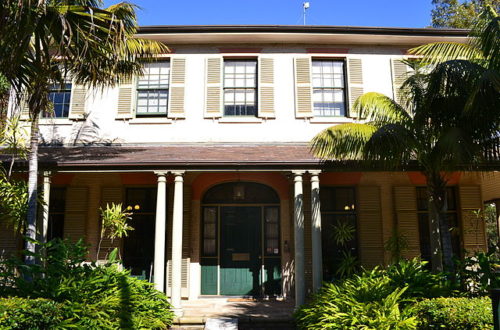The Architectural Design of the Future as Determined by Science Fiction

Through the lens of science fiction, we can explore worlds that are vastly different from our own. We can forewarn a terrible dystopia or idealize a stunning vision of tomorrow. For many years, humans have taken to imagining what the future might hold in regards to many different aspects of life, including in the realm of architectural design. Even in stories where the architecture isn’t the focus, it still usually has to be included in order to show something on the screen. Science fiction movies and TV shows usually aren’t tales of architectural feats, but they do allow us glimpses of what the architecture of the future might look like.
In films such as Blade Runner and Star Wars and shows like Black Mirror and Electric Dreams, we get the chance to explore far-away and futuristic worlds. We travel in fictional spacecraft, enter their buildings, and walk through the cities of tomorrow. What do these architectural visions put on the screen tell us about our current reality and what the architecture of the future might really be like?
How the Real World Seeps Onto the Screen
Often, these architectural ideas that we can find in fiction actually do come right out of the world we already live in. It’s not easy to envision a totally unique world that doesn’t take anything from what actually exists, and most filmmakers recognize that this is not really a necessary task for them to take on. The existing architects of our world have often already done a lot of the heavy lifting with inspiring designs brought to life today even though they might fit in even better on the science fiction screen.
One of the earliest examples of an architectural vision being displayed through the lens was, in fact, created this very way. The image of tomorrow’s city that is seen in 1927’s Metropolis was really one built heavily from the inspiration of then current-day New York. While this movie takes the towering skyscrapers to the next level, making it a fantastical vision for the contemporary audience, the concept itself was, in no way, an original design.
This has also been the case for almost every single other work of science fiction. As hard as they try to pull us into alternative worlds, and as often as they might be successful, these visions of tomorrow are almost always heavily based on the real world of today. Thanks to forward-thinking architects that build buildings which are ahead of their time, nobody’s suspension of disbelief is crumpled over the idea that worlds portrayed could really be the future. At the same time, the use of real settings is even able to add a bit more authenticity to the screen.
The Architectural Design That Can Be Seen in Science Fiction
What this means is that a lot of the architectural design that we see in depictions of the future on the silver screen just comes from the architectural work already being done today. While there may not be much that is novel about the architecture in these fictional worlds, there are still aspects that may say something about our architectural past or even where we’re heading. Taking a look at some of the trends of science fiction architecture, we can get a better idea of how they make for a very futuristic vision.
Strict Contemporary Looks
One direction that has been taken in many films is showcasing a very dramatic evolution for the contemporary style. High-rises with lots of glass, homes made of concrete, these already exist as staples of contemporary architecture. In movies like Playtime, with its extreme emphasis on modernism, and High Rise, these features are highlighted. In fact, the tall buildings of our current urban areas are frequently used in science fiction to show the class hierarchy literally, where the richest of society live at the top while the poor struggle on street-level. We see this method in the movie Elysium and the show Altered Carbon.
A Futurism Infused with Culture
In certain films, we are seeing an actual shift from the everyday world that we know. Exciting possibilities of a high-tech society that draws inspiration from African culture is explored through Wakanda in the movie Black Panther. This film is a great example of the afrofuturism trend and the architecture in it is incredible, taking some inspiration itself from actual post-colonial African architecture. The real feats of architecture of African culture have made it into this movie and the movie displays how culture and architecture can come together in even greater ways in the actual future.
Going Out of This World
Other science fiction portrayals of architecture truly go beyond what we can experience in our real lives. With spacecrafts designed past the limits of our current capabilities and impressive imaginations giving us a look at the societies of otherworldly beings on far-away planets, some science fiction really pushes the envelope of what the architecture of the future could be. One excellent example is the vision presented by the spaceship in 2001: A Space Odyssey. This classic really managed to get us rethinking what sort of architectural designs could be possible.
How Fictional Trends Can Become the Real Design of the Future
As science fiction draws on the real world, our architectural designs in reality may also then draw on what we see on the screen. These fictional trends may then start to become a part of the actual design of the future. Certainly, the work of architects can take inspiration from any number of different sources. Why wouldn’t that inspiration be from the buildings of Blade Runner, the streets of TRON, or the ecumenpolis planet Coruscant of Star Wars? Really, if we think about it, we may realize that these fictional tales have already inspired much of the architecture of today.
Designing Our Architectural Future Every Single Day
It’s exciting to imagine the far off possibilities for the world we live in and the architecture that can be a part of it. Science fiction allows us to do this, even though it’s our real-life architects that are truly designing our future architecture. Every day, they explore new ideas and work to build the world we will someday live in.
Would you like to receive similar articles by email?



